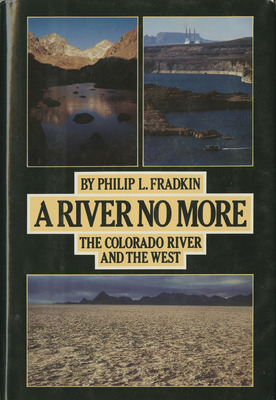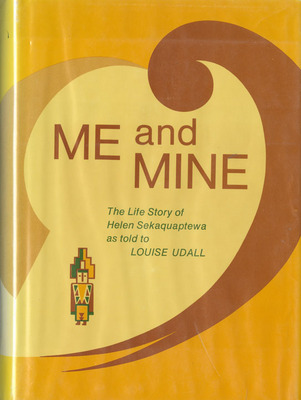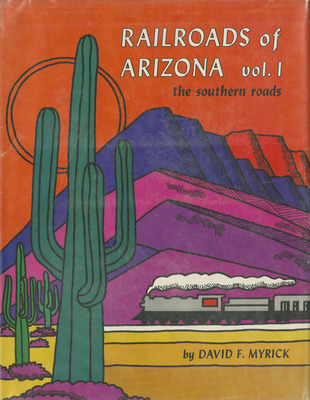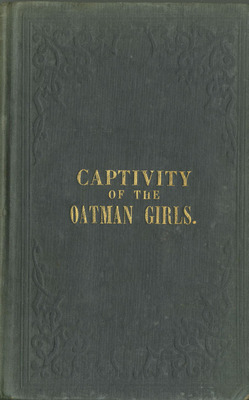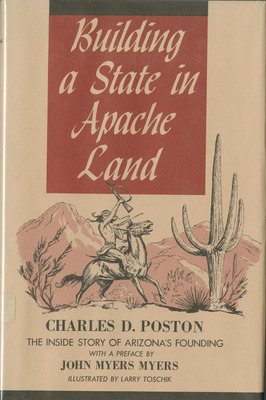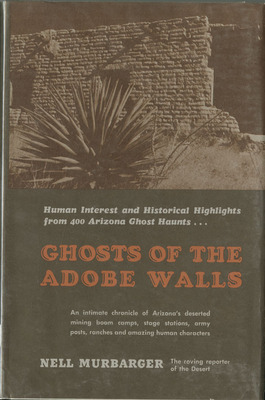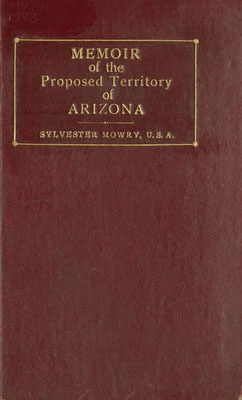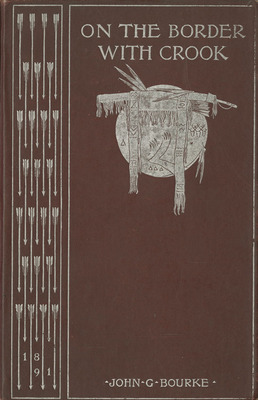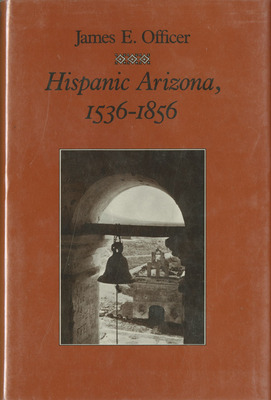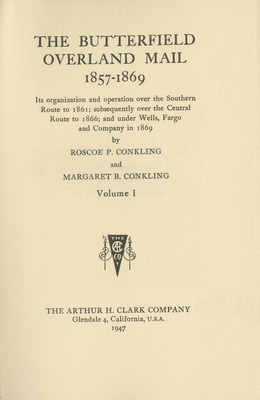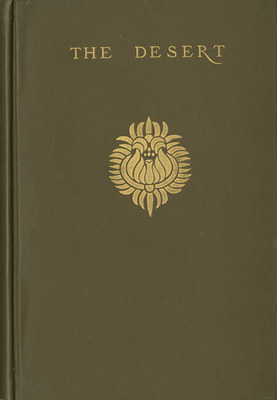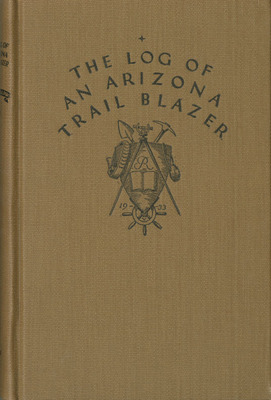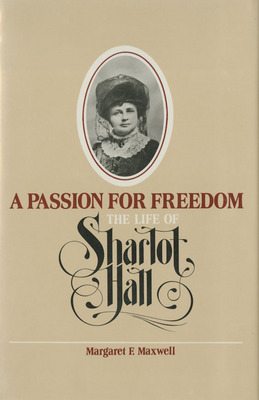
Browse the Books - Alpha by Author
Report on the United States and Mexican Boundary Survey
Shortly after ratifying the Treaty of Guadalupe Hidalgo (1848) and the Gadsden Purchase (1854), Congress authorized a boundary survey of its new property. Southern Arizona was new and wonderful ground. Lieut. Emory was placed in charge and the result…
Cochise, Chiricahua Apache Chief
Sweeney exhibits an impressive grasp of a man, his culture, and his times in this epic biography of the Chiricahua Apache warrior (d. 1874) who raided across southern Arizona and northern Mexico in the mid-decades of the nineteenth century. Based on…
Steamboats on the Colorado River, 1852-1916
From the first vessel (a small, well-worn machine named the Uncle Sam) to the boom years of the 1860s and 1870s, the swarm of steamers led to the establishment of landings from as far south as Port Isabel (now a mud flat in the Colorado River delta)…
Forging the Copper Collar: Arizona's Labor-Management War of 1901-1921
Byrkit’s account of the growing conflict between the copper companies and the unions, which included a chapter of the then-powerful Industrial Workers of the World, known as the “Wobblies,” does not mince words: the companies were the bad guys,…
Medicine in Territorial Arizona
In the early days, the Spanish surgeon was absent, his place taken by the missionary; but, of course, Native American healers were very much present. Illnesses, injuries, and remedies are described through the Spanish and Mexican periods, followed by…
Legislative History of Arizona, 1864-1912
The bulk of the volume devotes a chapter each to the twenty-five territorial legislative sessions between 1864 and 1909. Besides the expected statistics and lists of officials, there is a lively narrative of the things that occupied legislators at…
Mormon Settlement in Arizona: A Record of Peaceful Conquest of the Desert
State historian (1919-1928) and the author of the three-volume Arizona: The Youngest State (1916), McClintock performed a rare and enduring service with the publication of this detailed and well-written history of the important contributions of…
Mission of Sorrows: Jesuit Guevavi and the Pimas, 1691-1767
This book’s narrow focus is its strength. In his in-depth study of mission Los Santos Angeles de Guevavi, and to a lesser extent Tumacácori, Kessell provides much biographical data about the many lesser-known missionaries that served among the…
Biotic Communities: Southwestern United States and Northwestern Mexico
In Results of a Biological Survey of the San Francisco Mountain Region and Desert of the Little Colorado, Arizona (Washington : GPO, 1890), the first great biological study involving Arizona, C. Hart Merriam asked what are Arizona’s life zones, and…
A River No More
Fradkin is an investigative journalist who has taken as his beat the American West. This is his thorough-going account of the land, the people, and the industrial exploitation of the vast quarter of the United States drained by the Colorado River.…
Yes is Better Than No
When this book was published at least one reviewer thought it was a racist look at Native Americans. It is, in fact, just the opposite—a clear-eyed viewing of the difficulties faced by Papagos (now renamed Tohono O’odham, by their own choice) in…
The Miracle Life of Edgar Mint
Resuscitated after having his head crushed under the wheels of mail truck, young Edgar Pressley Mint, the book’s eponymous half-Apache protagonist, embarks on a Dickensian odyssey in which he stoically endures myriad indignities, with the help of a…
The Bean Trees
Kingsolver fills her story with humor and human understanding and a Tucson setting that is packed with real places and events.
--W. David Laird.
--W. David Laird.
The Dark Wind
Hillerman (1925-2008), who was an Albuquerque newspaperman and lived for more than forty years in New Mexico, is usually identified with that state, but we note that the largest part of the Navajo Reservation, including its capital Window Rock, is in…
The Monkey Wrench Gang
More than thirty-five years old and still in print, Abbey’s rousing, episodic adventure story pits a small band of eco-terrorists against a culture based purely on image and commercialism. A sequel, Hayduke Lives! (Boston: Little, Brown, 1990)…
The Rainbow Trail
Zane Grey’s (1875-1939) strong connection to Arizona, not to mention the fact that his books sold worldwide, and still do, made him the most popular author of the late-nineteenth and early twentieth centuries. Grey is justly famous for his flowery,…
Circus of Dr. Lao
Finney (1905-1984), a proofreader for the Arizona Daily Star, produced one of the seminal works of fantasy fiction with this depression-era story of a Chinese traveling circus that magically appears in the sleepy town of Abalone, Arizona. Illustrated…
Blood Brother
Elliott Arnold (1912-1980), a prolific novelist, journalist, and short-story writer, weaves a tale of Arizona from 1856 to 1874 in this classic southwestern novel. It centers on the Chiricahua Apache leader who stands by his word as the newly arrived…
The Changing Mile: An Ecological Study of Vegetation Change with Time in the Lower Mile of an Arid and Semiarid Region
In many cases, the historical photos are supported by old written records. Climatologist Hastings and botanist Turner helped pioneer this enterprise in beautiful sets of images and clear text. They describe and measure the effects of floods,…
Desert Year
Krutch (1893-1970) was an eastern city dweller all his life until a sabbatical in Arizona overwhelmed him. He spent the remaining eighteen years of his life in Tucson. Krutch, who once claimed (I paraphrase) that there was nothing in nature one…
Gift of Angels: the Art of Mission San Xavier Del Bac
In an act of devotion and a defining work of scholarship, anthropologist Fontana indentifies and interprets nearly 200 saints and angels that ornament San Xavier del Bac, the mission church on the Tohono O’odham reservation southwest of Tucson.…
Yuma Crossing
Martin, a Pulitzer Prize winning newspaperman and head of the University of Arizona Journalism Department, recognized the inherent drama in the cavalcade of peoples and cultures that converged at the crossing of the Colorado River and wrote this…
Tucson: The Life and Times of an American City
Beginning with his introduction to what he describes as a “perilous paradise,” Sonnichsen introduces in absorbing detail important characters and events, from prehistoric times to the present, and shows how they interacted with a hostile…
Life in Old Tucson, 1854-1864: As Remembered by the Little Maid Atanacia Santa Cruz
Lockwood’s goal is to “revive and relive the past” with short, personal biographies of “leading citizens” whose names and works live on, and who wrote their deeds indelibly into the record. Lockwood either personally knew the characters or…
Cycles of Conquest: The Impact of Spain, Mexico, and the United States on the Indians of the Southwest, 1533-1960
The first half of the book is a detailed examination, community by community, of first contact and its effects, starting in 1533. The native viewpoint—Tarahumara, Mayo, Yaqui, Upper and Lower Pima, Ópata, Seri, Pueblo, Navajo, Apache, Yuman—is…
A Pima Remembers
Still in print after more than fifty years, Webb’s simple narrative recalls life where he was born in the Pima village at Gila Crossing, about twenty miles south of Phoenix, and the traditional beliefs and practices of his people. Educated by Pima…
Of Earth and Little Rain: the Papago Indians
At the time this book was published, the Fontana family had lived just a few feet from the reservation boundary for twenty-five years, and this text reveals both the author’s interaction with his neighbors and how geography and climate define life…
Me and Mine: The Life story of Helen Sekaquaptewa
Her memories range widely across events during her school years, which ended in 1918, and her life as an outcast of sorts because her family continued to resist outside intrusion in Hopi life. Helen’s memories are clear and straightforward. Whether…
Conquest of Apacheria
Thrapp (1914-1994) established new standards for scholarship and readability in the half dozen books he produced on subjects ranging from the Mimbres Apache Chief Victorio to the U.S. army scout Al Sieber. The Conquest of Apacheria is Thrapp at his…
Western Apache Raiding and Warfare
Goodwin (1907-1940) did what no other anthropologist had done before him—he lived for eight years in the 1930s with the San Carlos Reservation Apaches, recording their history, customs, relationships, values, and more. He became their friend and…
Geronimo: The Man, His Time, His Place
Debo (1890-1988), the author of a history of American Indians and two outstanding books on Oklahoma tribes, broke new ground with this empathetic, if not necessarily sympathetic, biography of the iconic Chiricahua Apache leader. Debo erases the…
Life Among the Apaches
Cremony (1815-1879) led an adventurous life as an interpreter with the U.S.-Mexico Boundary Commission, 1849-1851, and as an officer with the California Column during the Civil War in Arizona and New Mexico. In this stirring memoir, the former Boston…
A Little War of Our Own: The Pleasant Valley Feud Revisited
Arizona’s own version of the Hatfield-McCoy feud played out between the Graham and Tewksbury families near Globe in the 1880s, pitting cattlemen against sheepherders and spinning off repercussions that linger today. In his enlightening and…
Financing the Frontier: A Fifty Year History of the Valley National Bank
Beginning with the story of nine pioneers who pooled $25,000 to found the Gila Valley Bank in Solomonville, he traces the institution’s growth through panic, consolidation, and expansion to become the largest financial institution in Arizona and…
Railroads of Arizona (6v)
Few events were more revolutionary for Arizona than the coming of the railroad in 1877, leading to major changes in commerce, settlement, and industry. Myrick’s books are the first and last word on the subject. They are filled with intriguing…
Be it Enacted: The Creation of the Territory of Arizona
Sacks (1894-1971), a retired physician with a passion for historical research, describes in intricate and absorbing detail the political maneuvering that commenced with the Gadsden Purchase in 1854 and culminated in the organization of Arizona…
The Hand-Book to Arizona: Its Resources, History, Towns, Mines, Ruins and Scenery
This early, comprehensive, and readable handbook was the result of an extensive tour he made of Arizona in 1877. In nineteen topical chapters, he discusses routes from California and Missouri to Arizona; the history of the territory; physical and…
Captivity of the Oatman Girls: Being an Interesting Narrative of Life Among the Apache and Mohave Indians
For all its moralizing and stilted prose, a century and a half later it remains a compelling account of a young girl’s life among the Indians that reveals as much about our own perceptions as it does about the fears and fascinations of our…
Uncle Sam's Camels: the Journal of May Humphreys Stacey Supplemented by the Report of Edward Fitzgerald Beale (1857-1858_
The army procured camels from Tunis, along with handlers, the chief of whom was a Syrian/Greek, Hadji Ali, affectionately known as “Hi Jolly.” Nineteen-year-old May Humphreys Stacey (1837-1886) accompanied U.S. Navy lieutenant Edward Beale on the…
The Peralta Grant: James Addison Reaves and the Barony of Arizona
James Addison Reavis (1843-1914), a former soldier, teacher, and journalist, saved his best occupation for last—Baron of Arizona. A self-taught forger from his earliest days, he feasted on a main course at the Court of Private Land Claims to the…
Building a State in Apache Land: The Story of Arizona's Founding as Told by Arizona's Founder
Poston (1825-1902) was a tireless promoter of himself and of Arizona. From the time of his arrival in 1854, the Kentucky native was involved in silver-mining and lobbied relentlessly for the creation of Arizona Territory. Poston writes with assurance…
Ghosts of the Adobe Walls
The chapters, forty of them, usually cover more than one ghost or near-ghost town, some of which have attracted new residents since Murbarger’s day; they are small but most of the ghosts have gone into hiding to avoid the tourists. Murbarger was a…
Memoir of the Proposed Territory of Arizona
In this short, but fully packed, justification for the creation of Arizona Territory, Mowry (1830-1871) relates the history of the area, emphasizing the importance of its natural resources and its strategic location as a corridor to California. …
Kino's Historical Memoir of Pimeria Alta: A Contemporary Account of the Beginnings of California, Sonora, and Arizona, by Father Eusebio Francisco Kino, S.J., Pioneer Missionary Explorer, Cartographer, and Ranchman, 1683-1711
Because of his popularity today it is difficult to imagine that Jesuit padre Kino’s main writings were misplaced for nearly 150 years in a Mexico City archives until dusted off by historian Bolton in 1907. Between 1687 and 1711, he made more than…
Friars, Soldiers, and Reformers: Hispanic Arizona and the Sonora Mission Frontier, 1767-1856
Described by borderlands scholar Cynthia Radding Murrietta as “a masterpiece of the historian’s craft,” this narrative history of the Spanish and Mexican periods on the Sonora-Arizona frontier begins with the expulsion of the Jesuit…
Record of Travels in Arizona and California, 1775-1776
This folio-size edition is as attractive as it is unusual. In this trip, his second, Garcés was gone eleven months and traveled more than 2,000 miles, without a military escort and accompanied by only a few Indians, across territory where few, if…
On the Border with Crook
Army officer and ethnologist, Bourke (1846-1896) was aide to Brig. Gen. George Crook during the Apache campaigns in Arizona. Written following Crook’s unexpected death in 1890, On the Border with Crook is a compelling vindication of his former…
History of Arizona and New Mexico, 1530-1888
Although burdened with some errors, this early history of Arizona (and New Mexico) holds up remarkably well in large measure because of the depth of its research in primary documents and the accounts of pioneers, many of whom were still living at the…
The Autobiography of a Papago Woman
Chona, the daughter of a Papago (Tohono O’odham) village chief when the tribe first came under American supervision, was in her nineties when Underhill (1884-1984) recorded her recollections during several visits between 1931 and 1935. She recalls…
Killing the Hidden Waters
Bowden is foremost a newsman, bringing us front-page dispatches from the field and border, and urging us to stay vigilant. In this book, he reminds us that we live in an arid state where water was, is, and forever will be a paramount concern.…
Tertiary History of the Grand Cañon District
When Dutton published this book, geology was an infant science and Arizona was still a territory, but his study and story of the many eroded layers of sedimentary rock of the Grand Canyon and southern Colorado Basin Plateau are a durable blend of…
Brighty of the Grand Canyon
Brighty was a real burro abandoned at the mouth of Bright Angel Creek and adopted as a pet by Uncle Jim Owens. Prolific author Marguerite Henry (1902-1997) made the burro famous with this children’s book, as young Jimmy Owen and his endearing pet…
Crazy Weather
Approaching his fifteenth year, South Boy decides to do something besides read a book in the 100-degree heat that stifles the air in the mesquite patches around the Colorado River. A plunge in the cool river to avoid the responsibilities of work and…
Bless the Beasts & the Children
The six teenage boys, ranging from rebels to wallflowers, are sent off to summer camp by self-obsessed parents who vaguely wish that the youths will be toughened up and civilized by a camp counselor named Wheaties. The camp’s sales line to parents…
The Desert Smells Like Rain: A Naturalist in Papago Indian Country
“The desert is unpredictable, enigmatic,” naturalist Nabhan writes. “One minute you will be smelling dust. The next, the desert can smell just like rain.” Nabhan captures that thrill as he entwines his own research with native ways practiced…
Filaree
Leaving Texas in 1910 for greener pastures in Arizona gives the woman at the center of this gritty novel plenty to think about. The book traces her observations on ranching, family, and isolation as she moves from her third decade into old age.…
Sonora: A Description of the Province
A German Jesuit, Pfefferkorn (1725-1798[1]) spent eleven years among the Pima, Opata, and Eudeve inhabitants of northern New Spain until he was deported with the expulsion of the Jesuits in 1767. Released from captivity when the elector of Cologne…
New Trails in Mexico: An Account of One Year's Exploration in North-Western Sonora, Mexico and South-Western Arizona, 1909-1910
Despite its title, much of this book is about Arizona and its remarkable borderland with Sonora, as seen by Norwegian explorer Lumholtz (1851-1922). He visited the villages of the Tohono and Akimel O’odham (Papagos and Pimas) and Cocopah, traveled…
Anza's California Expeditions
In the third quarter of the eighteenth century, the Spanish Crown was sufficiently concerned about Russian exploration down the Pacific coast of North America that it felt the need to take immediate action. And so, in 1774, Juan Bautista de Anza…
Hispanic Arizona, 1536-1856
In this monumental study, Officer works through centuries of documents to tell the stories, and celebrate the accomplishments, of soldiers, merchants, ranchers, and their families, along with a succession of priests and missionaries, who settled the…
Going Back to Bisbee
Shelton is a wordsmith and his wordsmithery, if you will, is constantly on display. We know he made this drive many times, but what he presents to us is a single trip brimming with event after event, image after image, and idea after idea. The…
Arizona: A History
In this sparkling and insightful interpretive history, Sheridan traces the state’s evolution from frontier settlement, through the emergence of an extractive economy, and its post-WWII transformation into a Sunbelt poster child. Sheridan, who has…
Beautiful, Cruel Country
The country of her title is the hilly, scrub-covered desert along Aravaca Creek, west of Tubac and a few miles north of the U.S.-Mexico border, where she grew up on the Wilbur ranch. Whether it was the almost daily visits of local Native Americans or…
Arizona: A State Guide
The WPA writers of the Arizona guide, under the direction of artist and author Ross Santee, couldn’t resist a good story, especially about frontiersmen, cowboys, gunplay, horses, miners, cactus, canyons and precipices.
--Steve Cox.
--Steve Cox.
Vanished Arizona: Recollections of My Army Life
In her classic account of army life, Summerhayes records with nostalgia, humor, and unbounded affection the experiences of a young bride released from the confines of Victorian propriety in a strange and fascinating country. Her descriptions of…
History of Arizona
When Farish died in 1919, one year after volume eight was published, he had been Arizona State Historian for seven years and a few months. During that time he produced and copyrighted in his own name the volumes in this set. All volumes are…
Man and Wildlife in Arizona: The American Exploration Period, 1824-1865
“We feasted today on blue quail and, at night Stanly came in with a goose. ‘Signs’ of beaver and deer were very distinct; these, with the wolf [coyote], constitute the only animals yet traced on the river.” So writes William Emory on his trip…
Arizona Place Names
For a quick and fun introduction to the state’s geography and history, you can’t beat Will Barnes’s Arizona Place Names. From Abbie Waterman Peak near Tucson to Zuni Point at the Grand Canyon, Barnes tried to include every mountain, canyon,…
Personal Narrative of James O. Pattie
Heroism and adventure drip from the pages of Pattie’s story of his experiences, as told to Cincinnati magazine editor Timothy Flint, trapping beaver along the Gila, exploring the lower Colorado River, fighting Indians and Mexicans, rescuing damsels…
The Spanish Frontier in North America
Weber (1940-2010) deals with a broad array of encounters, rivalries, and exploits that transformed the ecological, cultural, and political landscapes of the continent, including Mexico and the Southwest borderlands. Control of the frontier meant…
Rim of Christendom: a Biography of Eusebio Francisco Kino, Pacific Coast Pioneer
The first complete biography of one of the major players on the stage of the Spanish borderlands. Eusebio Francisco Kino (1645?-1711) was more than just an Italian-born, German-educated Jesuit in the service of the Spanish Crown. His manuscripts…
Romance of the Colorado River: The Story of Its Discovery in 1540, with an Account of the Later Explorations
Thirty years after he rowed through the Grand Canyon with John Wesley Powell, geologist Dellenbaugh (1853-1935) dipped his pen in ink to narrate the history of other explorers who pulled an oar on its raging rapids or tried to wade its treacherous…
Adventures in the Apache Country: A Tour Through Arizona and Sonora with Notes on the Silver Regions of Nevada
An inveterate traveler, the Irish-born Browne (1821-1875) toured southern Arizona in 1863, with his friend Charles Poston, as part of a private inspection of mines and mineral resources. His report entitled “A Tour Through Arizona,” which…
Reports of Explorations and Surveys, to Ascertain the Most Practical and Economical Route for a Railroad from the Mississippi River to the Pacific Ocean. Made Under the Direction of the Secretary of War, in 1853-1854.
Widely distributed, as were most important federal documents at the time, this twelve-volume set (in thirteen physical volumes) was an attempt to define the best route for a railroad that would mitigate the expense and time of building a track…
The Butterfield Overland Mail, 1857-1859
“Remember boys, nothing on God’s earth must stop the United States mail!”—John Butterfield’s instructions to his drivers. Over a period of eighteen years beginning in the 1920s, from their home in El Paso (once known as Franklin City),…
Shadows at Dawn: A Borderlands Massacre and the Violence of History
Jacoby’s carefully researched, tightly argued, and elegantly written book provides brilliant insights into society, culture, and complex interethnic relationships in territorial Arizona using as a case study the April 30, 1871 massacre of peaceful…
Confederate Pathway to the Pacific
Based on three decades of diligent research and creative thought, Finch tells the story of Arizona’s three years as a Confederate territory through the activities of Maj. Sherod Hunter, a self-exiled Tennessean and young widower who commanded the…
No Settlement, No Conquest: A History of the Coronado Entrada
In thirty years of research, Richard and Shirley Cushing Flint found new documents and information that has enabled new translations of previously published documents which, when combined with new archaeological finds, changed the interpretations of…
Journey of Fray Marcos de Niza
J. Frank Dobie called this volume, with illustrations and decorations by José Cisneros and designed and printed by Carl Hertzog of El Paso, “one of the most beautiful books in format published in America.” Hallenbeck effectively challenged what…
The Truth About Geronimo
Although a number of army officers published recollections of their service during the so-called Apache Wars, Davis’s memoir stands out for its intimate and unflinching description of reservation conditions, his vivid portraits of military and…
Emil W. Haury's Prehistory of the American Southwest
Haury (1904-1992) was a central figure who, in his roles as professor and researcher, helped form pivotal concepts about cultures such as the Hohokam and Mogollon. In this book, edited by two of his students, we sample the spectrum of his thought and…
The Coronado Expedition,1540-1542
Extracted from the Fourteenth Annual Report of the Bureau of Ethnology (1896), Winship’s expansive book includes an itinerary of Coronado’s expeditions in New Spain, 1527-1547; detailed background and a historical narrative of his 1540-42…
Notes on a Military Reconnaissance, from Fort Leavenworth, in Missouri, to San Diego, in California, Including Parts of the Arkansas, Del Norte, and Gila Rivers.
Assigned as a thirty-five-year-old topographical engineer to accompany Brig. Gen. Stephen Watts Kearney’s Army of the West on its invasion of what were then the northern reaches of Mexico, Emory (1811-1887) provides an informed eyewitness account…
The Marvelous Country, or Three Years in Arizona and New Mexico
Cozzens’s descriptions are, as we might expect, stretched beyond modern calculations, but there is wit and wisdom hidden amidst the laughter. For Tucsonans, his two-sentence description of their fair city 150 or so years ago is an eye-opener:…
Exploration of the Colorado River of the West and Its Tributaries, Explored in 1869-1870,1971 and 1872, under the direction of the Secretary of the Smithsonian Institute
On May 24, 1869, leading a scientific expedition of ten in four wooden boats, Major John Wesley Powell (1834-1902) set out from Green River, Wyoming, to explore the Green and Colorado rivers through Grand Canyon. The large-format book includes an…
The Desert: Further Studies in Natural Appearances
In this book, an art historian and Rembrandt expert “set out to describe the desert from an aesthetic, not a scientific, point of view.”“Those things that can live in the desert become stamped after a time with a peculiar desert character . .…
Reminiscences (2v)
Economic geologist and speculator Pumpelly (1837-1923) was a nineteenth-century globe-trotter who took a liking to Arizona. In 1860, he came to investigate the fledgling mines south of Tucson, where he befriended pioneers such as Charles Poston,…
To the Foot of the Rainbow
In 1925, cultural anthropologist Kluckhohn (1905-1960) and several friends rode hundreds of miles to reach the foot of Rainbow Bridge, a glorious natural span of rock over a creek that flows into the mighty Colorado River. Along the way, they met…
The Man Who Walked Through Time
Fletcher was a modest-but-energetic guy-next-door who extolled walking, daring himself—and us—to get out of the house and go see America for ourselves. Fletcher’s stroll from one end of the canyon to the other provides a fascinating narrative…
Report Upon the Colorado River of the West, Explored in 1857 and 1858 by Lieutenant Joseph C. Ives
Although Ives (1829-1868) widely missed the mark when he predicted, upon viewing the Grand Canyon, that “ours has been the first, and will doubtless be the last, party of whites to visit this profitless locality,” his report had a significant…
Beyond the Hundredth Meridian: John Wesley Powell and the Second Opening of the American West
Powell—adventurer, bureaucrat, and consummate man of science—is portrayed as a visionary leader, often out of step with his contemporaries, whose true significance is most clearly visible in hindsight. In Stegner’s masterful telling, his story…
Through the Grand Canyon from Wyoming to Mexico
Many a Grand Canyon story begins with “The Kolb brothers . . . .,” and most of them are true. This is the incredible story of their 1912 rowboat trip down the Colorado River from Wyoming to Needles, California, and then a second leg in 1913 to…
Personal Narrative of Explorations in Texas, New Mexico, California, Sonora, and Chihuahua
If Bartlett (1805-1886) had been a more competent boundary commissioner, he might not have written this marvelous travelogue, one of the best published about the American Southwest and northern Mexico. Bookseller, politician, artist, and author,…
Log of an Arizona Trail Blazer
An educated man who taught at the University of Arizona for a few years in the 1890s, Rockfellow (1858-1947) was a superb storyteller and this memoir recounts his adventures, big and small, from a life well-lived. Rockfellow found what we now call…
Jeff Milton, A Good Man with a Gun
Texas historian J. Evetts Haley (1901-1995) recognized in the 1920s that the generation of cowboys and lawmen who populated the romantic era of western settlement was passing from the scene, and set about collecting and preserving their stories for…
Ranch Wife
In her engaging memoir, she writes with clarity and insight of round ups and branding, cats and dogs, cattle and other critters, and, above all, of life and work adapted to the rhythms of the changing seasons and the demands of a beautiful but…
Life of Tom Horn, Government Scout and Interpreter, By Himself
Composed while the army-scout-turned-range-war-assassin was awaiting execution for the murder of a fourteen-year-old-boy in Wyoming, Horn’s colorful autobiography provides an entertaining, if greatly embellished and frequently inaccurate, view of…
Passion for Freedom: The Life of Sharlot Hall
Hall (1870-1943) was Arizona’s first territorial historian, appointed only after much lobbying of politicians by herself and friends. It was her vision to turn the territorial governor’s home (a log cabin that can hardly be termed a…
Wyatt Earp, Frontier Marshall
Journalist Lake (1889-1964) interviewed the laconic Earp during his last days and produced this epic biography that, along with movies and a 1950s television series, transformed the relatively unknown frontier lawman into a western icon. Despite its…
The Papago Country, Arizona: A Geographic, Geologic, and Hydrologic Reconnaissance, with a Guide to Desert Watering Places
In this report, Bryan, later a geology professor at Harvard, surveyed the wells, streams, stock ponds, and natural waterholes from Tucson to Yuma, including the Tohono O’odham Reservation. The results reveal how precious water really is and how…











